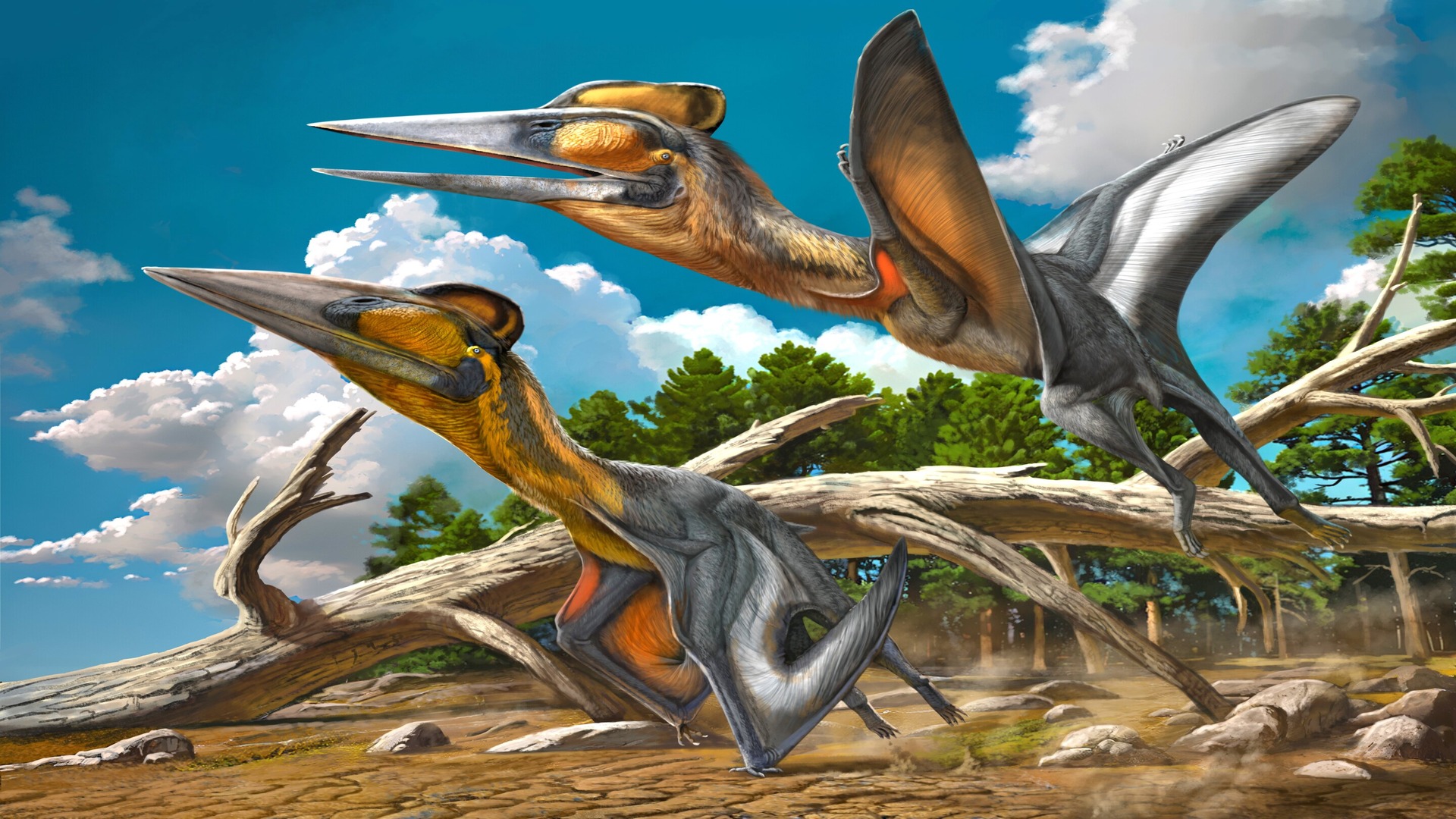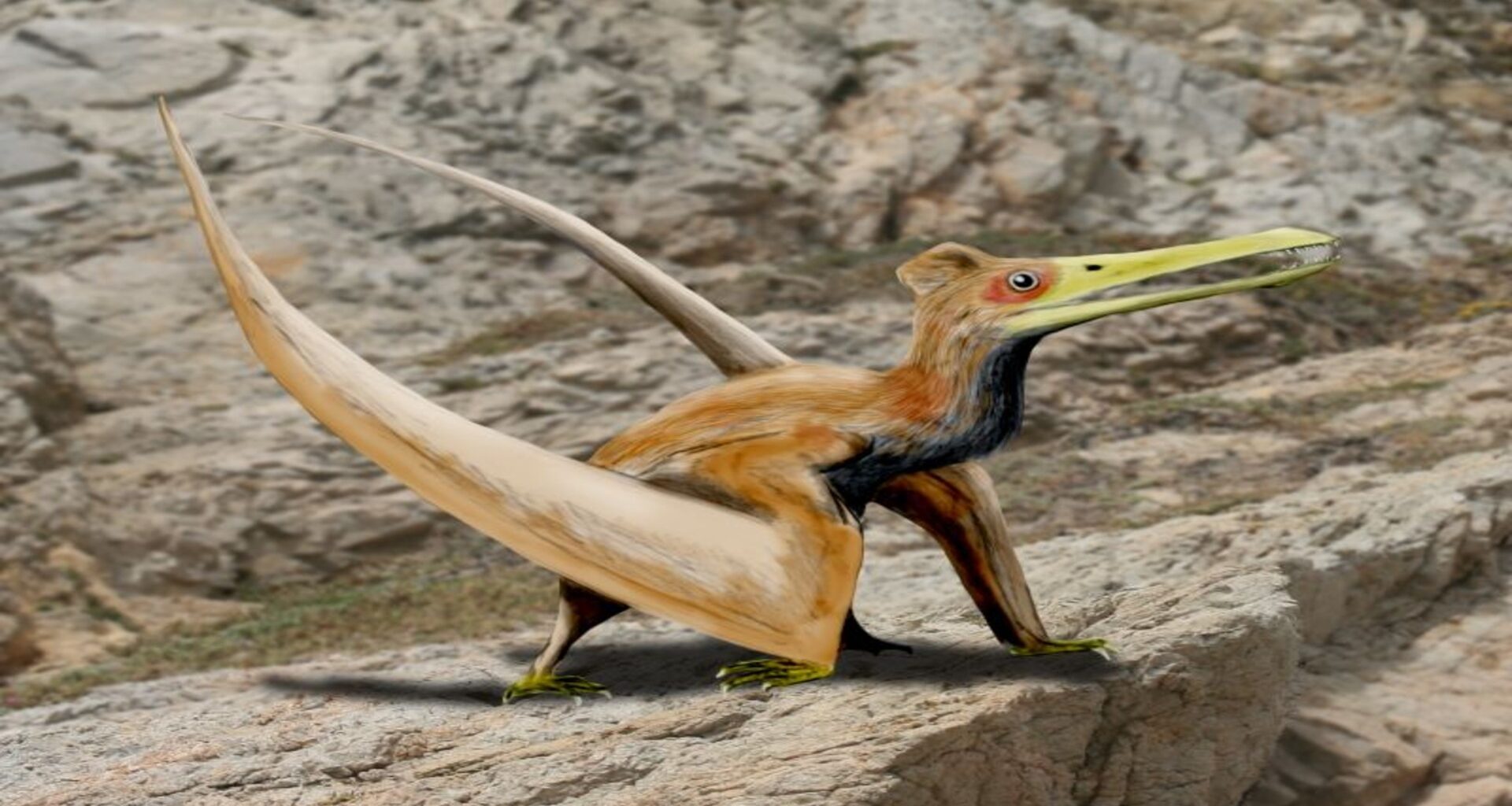An international team of researchers discovered a truly remarkable pterosaur from Japan, the first ever identified, changing the fossil record.
A partial cervical vertebra uncovered on Kyushu island, Japan revealed to paleontologists that this pterosaur had six cervical vertebra which made it a new species among its family and the only species known to Japan.
Pterosaurs were the first vertebrate group that achieved flight, researchers said in the study. Well-preserved remains have only been found in a few places in the world. The Japanese record is practically nonexistent, imbuing the latest discovery with a particular significance.
 Nipponopterus mifunensis / Zhao Chuang
Nipponopterus mifunensis / Zhao Chuang
Japan’s very cool pterosaur
The study aimed to reassess one of the three pterosaur specimens from Kyushu. Paleontologists first spotted the species, Nipponopterus mifunensis, in the 1990s in the Mifune Group geological formation in Kumamoto Prefecture.
The team behind the latest research was made up of researchers from the Shihezi University in China, the Zoology Museum at University of São Paulo in Brazil, and the Mifune Dinosaur Museum, Kumamoto University, and Hokkaido University.
“It’s a beautiful example of how science transcends borders,” they even noted.
The large research group used advanced CT scanning techniques provided by Kumamoto University and phylogenetic analysis. The team was able to identify the remains as having belonged to a new genius and species within the Azhdarchidae family. So not only did Japan have pterosaurs, they were among the largest that ever graced the earth.
Paleontologists believe that the Nipponopterus ruled the skies of Japan during the Turonian-Coniacian stages of the Late Cretaceous, which actually made it one of the earliest flying creatures on record, in its lineage. It had a wingspan of nine to 11.5 feet wide. Furthermore, the sixth cervical vertebra was a distinct trait.
A unique pterosaur
It has an elevated dorsal keel that runs along the back of its bone, extending not just over the epipophysis (neck) and across the entire postexapophyseal peduncle.
According to a research paper, “pterosaur cervical vertebrae had unique specializations.” Species variated in their bone structure. They were the first flyers, so they had developed a fascinating anatomy that permitted them to take flight with rather large bodies. It has a long groove along its underside, too, a subtriangular-shape condyle, and postexapophyses that projected outward to the sides. All these anatomical details concern the neck. These features appeared to have been central to their capacity to fly.
These variations specifically set the Nipponopterus apart from the rest. According to the press release, they belong to the Quetzalcoatlinae subfamily that also includes pterosaurs from Mongolia and North America.
Dr. Naoki Ikegami called it “a major step forward for Japanese paleontology,” as no other pterosaur had ever been formally named from skeletal remains in Japan. So the discovery offers unprecedented insights into the evolution of pterosaurs in Japan, and an impressive-looking winged creature to contemplate. Now, the pterosaurs have a new Japanese cousin to welcome into their family with ties to North America.
The pterosaur fossil is on display at the Mifune Dinosaur Musuem in Kumamoto.
The study was published in the journal Cretaceous Research.
